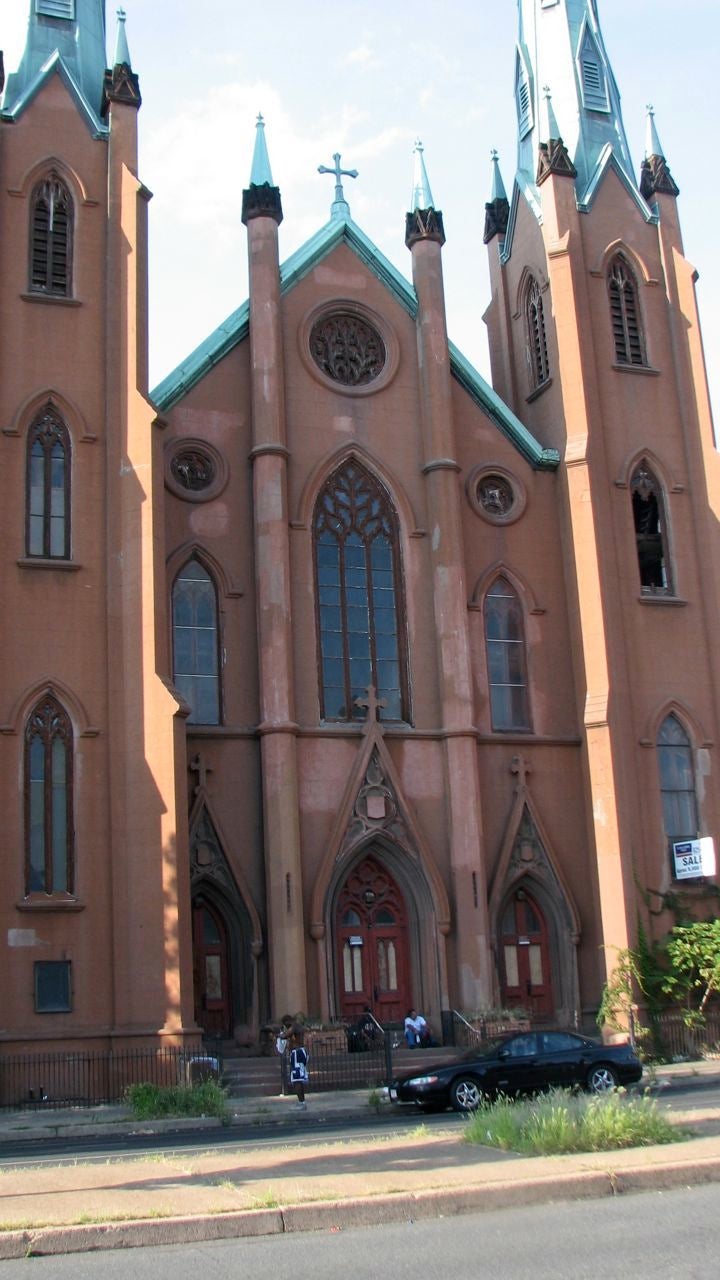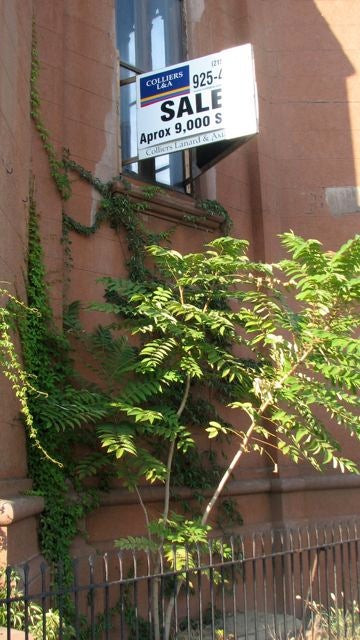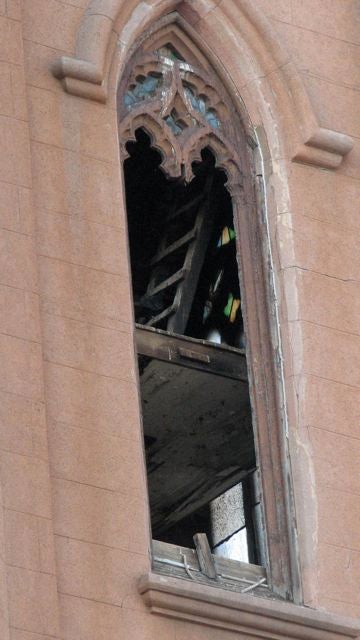Historical Commission committee OKs owner’s request to demolish historic church
The Church of the Assumption, the historic 19th-century church at 11th and Spring Garden Streets, moved closer to demolition on Tuesday, when the architectural committee of the Philadelphia Historical Commission voted to grant the owner permission to raze the building based on financial hardship.
Rehabilitation of the church has been estimated at $5 million to $6 million by its owner.
The application by Siloam, the owner of the church property, will be reviewed by the PHC’s financial hardship committee on Sept. 8. Both committees provide recommendations to the full commission, which will review the case on Sept. 10.
The church was designed and built in 1848-49 by Patrick Charles Keely, the most prolific ecclesiastical architect in 19th-century America. It is also historically significant, according to preservationists, because it was consecrated by John Neumann and it was the church where Katharine Drexel was baptized. Both became Catholic saints.
The church was vacant from 1995 to 2006, when the Catholic Archdiocese sold it to Siloam. The Archdiocese had intended to sell the property at one time to the Philadelphia Phillies, when the team was considering a downtown site for its new stadium, Siloam executive director Joe Lukach told the architectural committee.
Siloam had been leasing the adjacent rectory and was interested in buying that building. But the Archdiocese insisted on a package deal that included the church, Lukach explained.
Lukach, who was not on the Siloam board at the time, said the organization had considered using the church as a community center. But the long years of neglect and vacancy had resulted in a leaky roof and the decline of the building’s condition overall.
A subsequent inspection of the building by the Department of Licenses & Inspections, requested by PHC, found the building posed an imminent danger. Lukach said he was particularly concerned about the stability of the church towers. Siloam, however, could not afford to take the steps needed to stabilize the structure, he said.
Kevin R. Boyle, an attorney for Siloam, told the committee that the issue at hand was “the future of Siloam,” which he said provides crucial services to an overlooked segment of the population. “This is an entity struggling for survival,” he said, an organization that is in “just as bad shape as the church.”
Boyle introduced Jim Scott, senior vice president at Colliers International, the real estate firm that has been trying to find a buyer for the church since last January. Scott said he handles all the real estate owned by the Archdiocese. As the religious community dwindles, more of the Archdiocese properties become vacant. “Twenty additional churches have come onto the market” recently, Scott said. “They are beautiful, magnificent – but the money is just not there” to maintain them, he said. “We will see a wave of buildings coming on the market that are very hard to move.”
Scott said he tried marketing the Church of the Assumption to developers from the neighboring Chinatown community and as an entertainment venue. But when they saw the condition of the church up close, “everyone shied away,” he said.
He received one offer for $150,000 from a potential buyer who wanted to use the church as an arts venue, but the buyer’s bank would not support the deal.
When the committee hearing was opened to public comment, John Gallery, executive director of the Preservation Alliance for Greater Philadelphia, questioned whether the financial hardship claimed by Siloam was partially “self-imposed.”
Gallery noted that an analysis of the church building conducted in 2007 by the Community Design Collaborative found “cost estimates that were drastically different” from those recently submitted by Siloam.
Holding up photos taken in recent days by Colliers showing the interior’s poor condition, Gallery said, “This is the result of the owner’s action. This is not the way the building was at the time of its historic designation” in May 2009, he said. Potential buyers who may have been scared off by the property were not looking at the “result of Archdiocese neglect. This was the result of the active intervention of someone with a sledgehammer.”
The changes that have occurred inside the building, he said, were “not a result of a building that was simply vacant.”
Gallery also questioned why no action was taken by PHC or Siloam after the Licenses & Inspections report.
PHC executive director Jonathan Farnham later explained that the commission had declined to enforce the L&I violation report because “that action could have led to the demolition of the church rather than preservation. Our fear was that the decision would be taken out of our hands and put into the hands of the Court of Common Pleas.”
Farnham also noted that the commission had granted Siloam a demolition permit for the interior of the church shortly after designating the building as a historic property. Listing on the Philadelphia Register, at the time, did not protect a building’s interior.
Andrew Palewski, who had written the nomination form for the church’s listing on the historic register, also addressed the architectural committee. Palweski, who explained that he is a preservation contractor, said Siloam had hired the structural engineer Bevan Lawson to counter the Community Design Collaborative analysis, which had also been conducted for Siloam. That 2007 assessment found that “the overall structure is relatively sound and in fair condition,” but also recommended repairs and more evaluation.
Palewski said the Bevan Lawson report has “shortcomings” and “major inaccuracies,” and he urged the committee to retain an independent inspector for another analysis of the building.
He also noted that there had been an interested buyer for the church, Ellen Schicktanz, who had hoped to transform the church into an art gallery. But she and her husband Bill had been discouraged after seeing the interior demolition that Siloam had already done.
Lukach said that financial hardship experienced by his organization was never “self-imposed,” and the organization had lost as much as a half-million dollars since purchasing the church property. “I don’t have an agenda to take the church down,” he said.
Boyle added that “nothing had been done under the radar” regarding the church. The offer from Schicktanz was “not a viable offer,” he said.
The majority of the committee members agreed that the cost of rehabilitating the church made its sale, preservation or re-use “impracticable.”
One committee member, Shawn Evans, dissented. “We’re giving a death sentence to a remarkable structure,” and, he said, another estimate for the cost of stabilization of the building was needed.
The committee then voted 3-1 to grant the hardship application.
Contact the writer at ajaffe@planphilly.com.
WHYY is your source for fact-based, in-depth journalism and information. As a nonprofit organization, we rely on financial support from readers like you. Please give today.






